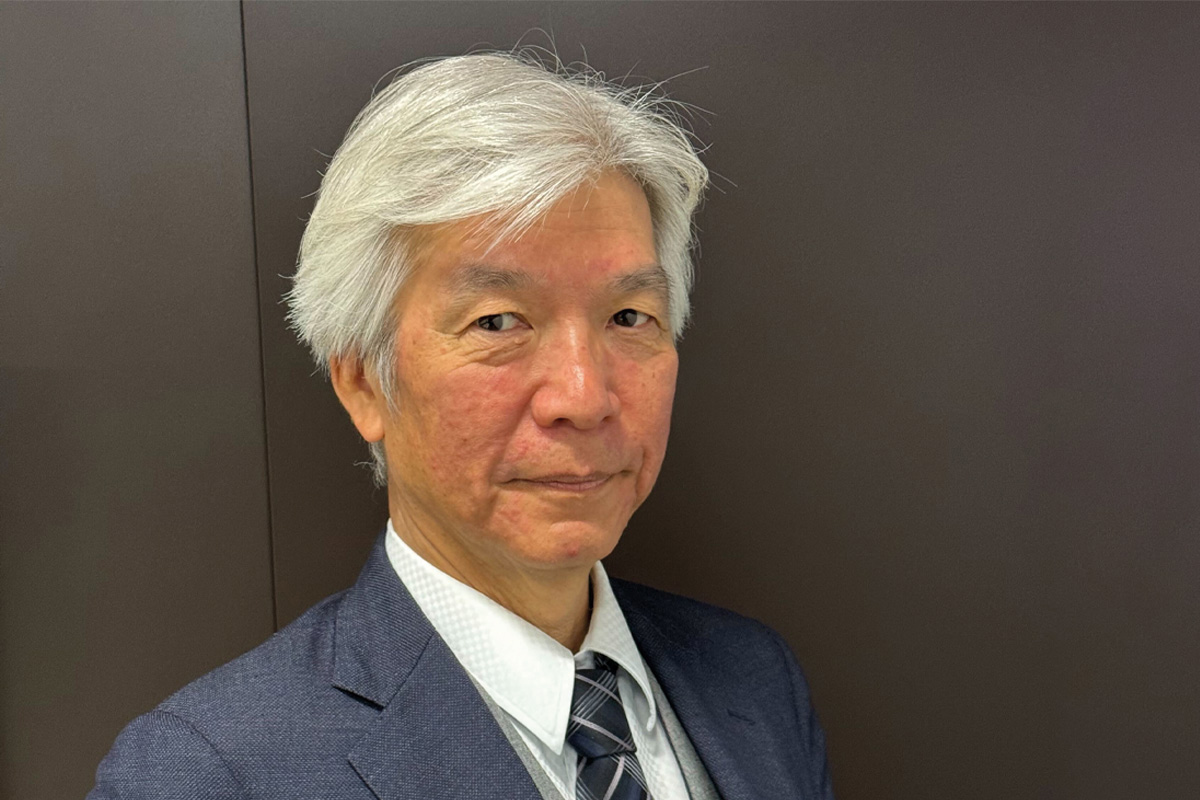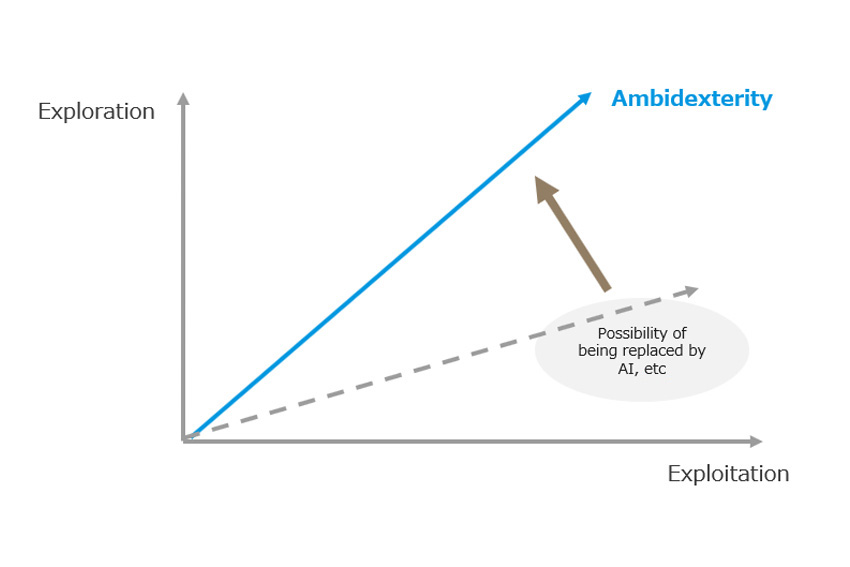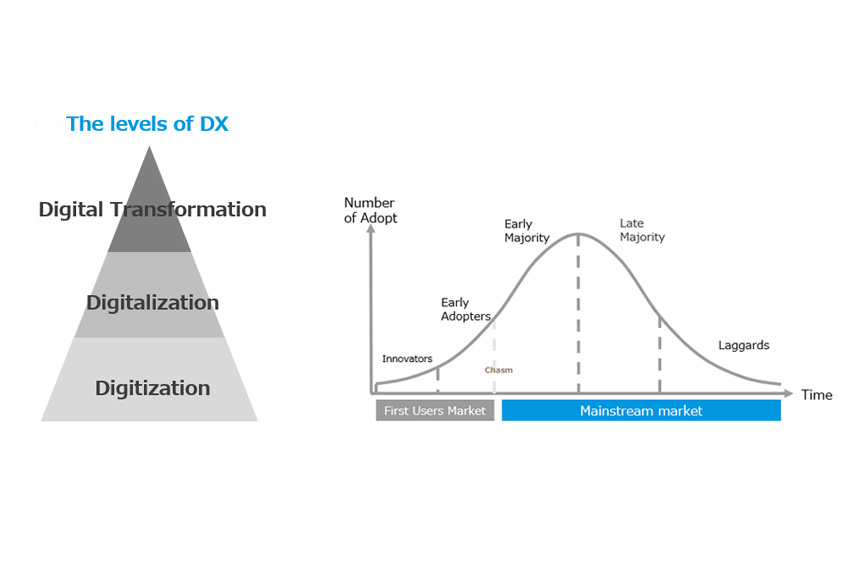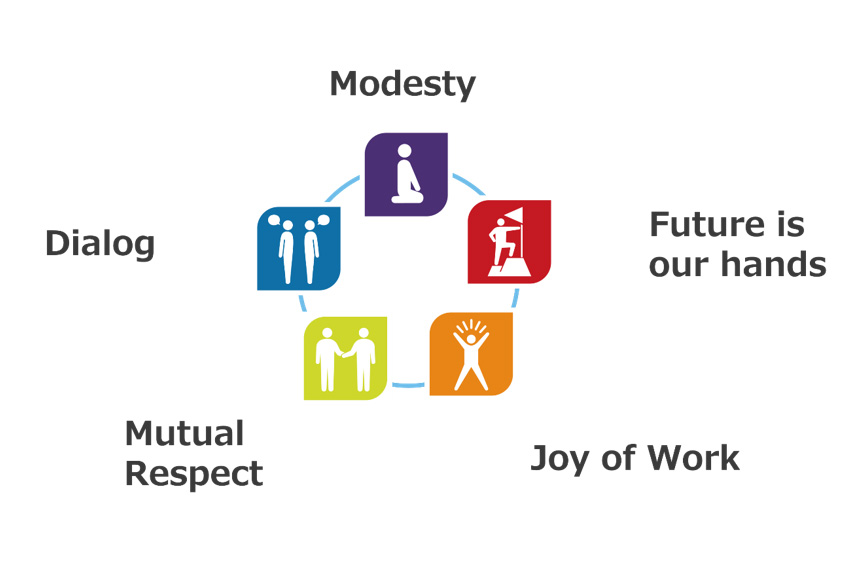In an exclusive interview, the President of Restar Embedded Solutions delves into the complexities of Japanese manufacturing amidst global shifts and outlines strategies for international growth and digital transformation.

It is an exciting time for Japanese manufacturing. The past three years have seen large supply chain disruptions due to COVID as well as the US-China decoupling situation, and as a result, corporate groups are looking to diversify their suppliers for reliability reasons. Known for their reliability as well as their advanced technology, Japanese firms are in an interesting position. Combined with a weak JPY, many observers argue this is a unique opportunity. Do you agree with this sentiment, and what are the advantages of Japanese firms in this current macro environment?
I generally concur with this premise. Nevertheless, upon closer examination, we observe that Japan's export-oriented trading companies are thriving. Conversely, businesses like ours, which rely on imports of various components from foreign companies, are grappling with significant challenges arising from the exchange rate fluctuations. The trade deficit for the fiscal year 2022 has seen a substantial drop, registering at a negative JPY 21.7 trillion. While Japan's overall economic outlook may be improving, the trade deficit remains substantial.
To address the challenges posed by the weak exchange rate and yen, one of the strategic measures we aim to implement involves leveraging our overseas offices in Singapore, Hong Kong, and Shanghai and negotiating contracts on a dollar-to-dollar basis for supplying to our international clients. Until now, we have been outsourcing our ODM (Original Design Manufacturer) business to manufacturing facilities in Thailand and China. However, we are actively exploring opportunities to potentially shift our manufacturing operations domestically.
We offer ODM services and supply components to the world's largest fishing reel manufacturers. Specifically, we provide the printed circuit boards that are integrated into the reels. Initially, we manufactured these components in Thailand, but we have gradually transitioned our production to a domestic manufacturer with ties to Fujitsu.
In the previous era, companies like yours, which engaged in ODM business, often outsourced manufacturing to cheaper labor markets. However, in this new era, many Japanese firms are reversing this trend and bringing manufacturing back to Japan due to the weak yen and lower labor costs at home. Over the past two decades, we have witnessed a significant acceleration in Japan's population decline and the aging of its population. What is your take on how that affects your ODM business and day-to-day operations in Japan?
There is certainly a decline in the labor force. Another significant challenge is that students seeking employment often do not prioritize the manufacturing sector as their top choice. In terms of sectors that Japanese graduates prefer to enter, manufacturing ranks relatively low. The more popular choices tend to be finance-related companies like Accenture or Nomura, which are consulting firms and operate in the upstream sector.
The aging of the labor force, including the experienced craftsmen who have been the backbone of Japan's manufacturing history, presents a formidable challenge for the sector. While certain aspects of business within manufacturing companies can be digitized, there remains a substantial part of the process that relies solely on the expertise of human craftsmen. Transferring knowledge and skills from one generation to another can prove to be a challenging endeavor.
In 2022, the preferred companies for recent graduates were ranked, and the top choices included Accenture, McKinsey & Company, PwC Consulting, Yahoo, NTT Data, and strategy consulting firms like Ernst & Young. This lineup would have been unthinkable in Japan about a decade ago. While there are still some manufacturing companies in the ranking, such as Sony Group, Hitachi, Fujitsu, and Japan IBM, the landscape has undergone a profound transformation.
Several factors contribute to this transformation. One key factor is the influence of American corporate culture on young Japanese professionals. Another significant factor is the shift among younger individuals towards prioritizing career advancement over lifelong loyalty to a single company. There's a diminishing desire to form deep attachments and commit to working for one company throughout their entire career.

How do you feel about this change?
It is crucial to recognize and accept this evolving situation. As a trading company, we are actively working on transitioning our corporate mindset from merely selling materials and products to becoming providers of valuable experiences and services. Over the past two years, we have made concerted efforts to prioritize training, education, and raising awareness within the company about this strategic shift.
Throughout history, trading companies in Japan have predominantly fulfilled two primary roles: logistics and financing. However, as the business landscape evolves under the influence of American corporate culture and changing market dynamics, trading companies are adapting by incorporating new services to maintain competitiveness. These services encompass co-creation, R&D, consulting, ODM, and various other solutions aimed at delivering fresh value to clients and partners. How have you transformed through this change of the times and added value that other traders or solution providers cannot?
Our strength lies in our ambidextrous approach. A concept gaining popularity recently is illustrated in a diagram with exploitation on the horizontal axis and exploration on the vertical axis. Historically, Japanese companies have primarily sought growth along the horizontal axis, focusing on short-term revenue and profit. However, this approach often reaches a plateau. Therefore, there is a growing recognition of the need for the vertical axis, which signifies exploration.
For us, exploration means venturing into different sectors and businesses that possess distinct strengths compared to our own. We have built a diverse portfolio of clients that extends beyond the manufacturing industry, encompassing areas such as office supplies and mid-sized companies. We are deeply involved in collaborative efforts with our clients, engaging in various new projects such as test marketing and collaborative initiatives aimed at enhancing their profitability. This approach aligns with the prevailing trend among many companies looking to expand by creating new business promotion divisions. These divisions are initially granted considerable autonomy for exploration during the first two years. However, expectations shift afterward, requiring them to demonstrate tangible results and outcomes, which often pulls them toward the lower end of the exploration axis.
Expanding our exploration horizon along the vertical axis indeed comes with a substantial cost and necessitates significant investment. We fully acknowledge this and carefully factor it into our strategic day-to-day operations as entrepreneurs. We are willing to bear this risk and have been consistently investing over the past two years. We also emphasize transparency and the sharing of results from the division's activities. This openness and information-sharing serve as valuable inspiration and motivation for everyone to continue expanding along the horizontal axis. As a result of our collective efforts over the last two years, we have observed clear momentum and growth across the board.
Can you give us an example of the focus of these entrepreneurial exploratory initiatives? Are any new services or products being developed or soon to be released that you can share with us?
DX (Digital Transformation) is currently a prominent trend. Within Japanese companies, a three-tier pyramid model is used to describe the different levels of DX. The base of the pyramid is digitization, the middle tier is digitalization, and the pinnacle is digital transformation. While there is substantial coverage and focus on digital transformation at the top of the pyramid, it's crucial to recognize that 98% of the Japanese economy consists of small and mid-sized businesses (SMEs).
Our mission is to specifically cater to and support these SMEs in their journey towards digitization and digitalization. We aim to strengthen these businesses by assisting them in embracing and adapting to digital technologies.
This is from a marketing perspective. Are you familiar with the concept of the chasm theory? This is a diagram illustrating it, with the horizontal axis representing time, and the vertical axis indicating the number of companies adopting a specific trend. Moving away from the diagram, we are discussing the adoption of innovative technologies within a certain timeframe. Within this framework, there is the "first users' market," comprised of innovators and early adopters who embrace new products and technologies early on. Notable companies in this category include Toyota, NTT, Sony Group, and the GAFA giants.
Our primary focus, however, is on the "mainstream market" situated at the opposite end of the spectrum, who fall within the late majority when it comes to adopting innovative technology. The late majority tends to adopt an innovation only after the majority of people have tried it.
It is worth noting that System Integrators typically do not target this audience. We believe it would be highly beneficial if there were companies with a mission to deliver technologies to the late majority market. We conduct our business with this goal in mind.

What is the relationship between the fact that your primary target is the late majority of companies and SMEs? Is it related to their size, culture, or aptitude? Why is there so much overlap between these two groups?
There is considerable competition among innovators and early adopters, and the demands from clients within that segment are notably high. Concerning the late and early majority market, we position our company at the early majority level. We offer and recommend approaches that we have thoroughly tested in-house.
Here is an example from our office supply business: Initially, we had around 1,000 companies within our clientele. We conducted research to identify and target specific companies that would be promising candidates for our DX (Digital Transformation) solutions. It became evident that for a business opportunity to be viable for us, it required a certain level of performance.
Out of the initial 1,000 clients, we honed in on approximately 300 companies as our primary focus. We then initiated visits and engagements with these companies, delving into conversations about their businesses and assessing their progress in terms of digitization. We also inquired whether they had a DX promotion department in place. In our efforts to gain a better understanding of the market, we discovered that many companies were at a loss about where to start when it came to digitization and digital transformation.
Japan has gained notoriety for its slow adoption of DX. Several factors contribute to this, including a declining population, which underscores the need for automation, as well as the imperative to boost the country's overall productivity. Consequently, there have been substantial investments in promoting digitalization. One example is Japan’s digital agency, which allocates a significant fund annually to assist SMEs in adopting digital tools. How big of an opportunity do you think are late majorities? What expectations do you have for your business growth as this represents such a big market growth that is yet to adopt digital tools?
The larger the company, the more challenging it becomes for us to provide solutions and services related to their business strategies and plans. However, regardless of a company's size or scale, they all require the same foundational levels of support and services when it comes to their operating environment.
One significant value we bring to our clients is the capability to integrate analytical tools that allow them to initiate the analysis and digitization of their financial data and operating environment. By providing tools for measuring and analyzing each component of their operational chain and individual work tasks, we assist them in pinpointing bottlenecks and discrepancies in their budgets or investments. Through digital technologies, we present a numerical representation of their operating environment, allowing them to clearly visualize areas for cost reduction.
Once we have highlighted areas where costs can be trimmed, we recommend reallocating those resources toward digital transformation initiatives. This shift in resources is aimed at improving profitability and enhancing productivity. We offer a comprehensive approach, combining consulting services with digital tools to identify areas in need of improvement and subsequently provide services that address these challenges.
How are you applying this business model to your international business? Are there any other countries or markets that you have identified as having the late majority that would be a good fit for your business model?
This business model and diagram represent a global standard, not specific to Japan. However, integrating it into our own business model presents a distinct challenge. It is crucial to make strategic decisions about where we operate. While the late majority market may exist in various markets worldwide, the key lies in identifying specific targets and delivering services tailored to those markets or countries.
For us, obtaining pertinent information and conducting thorough market analyses are of utmost importance. This allows us to pinpoint areas that larger companies may not be targeting. If we find that other companies are already focusing on the late majority in a particular market, we would consider exploring partnerships or collaborations with them to maximize our impact and reach within that specific segment. As a business, it is essential for us to prioritize profitability to ensure our sustainability and growth. However, we also recognize our social responsibility in promoting SDGs and contributing to environmental care.

One of the pillars of your business includes close collaboration with your clients in Japan. Is partnering with overseas markets something you have explored in the past or something that you are open to in the future? If so, what type of companies are you looking for?
We have established collaborations overseas and maintain offices in Singapore, Shanghai, and Hong Kong. It is important to note that our operations in these locations are relatively small-scale and primarily cater to Japanese clients or Japan-based companies. Our focus is on assisting these clients in enhancing their overseas factories and operations.
We are actively exploring opportunities to expand our client portfolio and extend our services to local businesses in the regions where we operate. Given our current capacity limitations, we are interested in exploring potential partnerships with local electronic trading companies.
Tsuzuki Embedded Solutions has now changed from the Tsuzuki Electric Group to the Restar Group. What are the main objectives and benefits of this change?
We needed to "expand our scale" in order to respond to changes in the environment and achieve sustainable growth. Restar Group aims to be an 'electronics value platformer' and is in a leading position among electronics trading companies. We judged that joining the Restar group would bring significant growth and synergies.
In terms of recruitment and human resources, diversity is one of our core pillars. We have intentionally eliminated any age limit policy. We firmly believe that skills, knowledge, and experience have no expiration date. Additionally, we have established clear recruitment standards and policies for employing foreign workers.
Regarding career advancement, we offer short-term benefits and incentives to make ourselves more appealing to individuals seeking professional growth. Over the past two years, these changes in our HR policies have yielded positive results. We were successful in recruiting a significant number of talented individuals, some of whom had previous experience at companies like IBM and Panasonic Group. Currently, our workforce comprises approximately 180 staff members, and in the past two years, we have been able to attract talented individuals from other companies, constituting about 20 individuals, which is roughly 10% of our total workforce.
In the next two years, what key targets or ambitions would you like to accomplish?
While increasing profits remains a fundamental objective, our broader mission centers around ensuring the well-being and prosperity of our employees and their families throughout their association with us. We firmly believe that their thriving is pivotal to our long-term sustainability. To achieve these objectives, we are actively exploring opportunities for upskilling, potentially through collaborations or alliances.
What is your personal goal as the president of Restar Embedded Solutions?
At my age, I should be retired by now. I believe my mission is to create an environment where our business will continue for the next generation. It is my joy to have a part in it.
0 COMMENTS